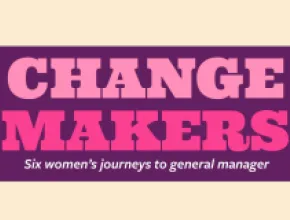If current meetings industry booking trends continue, 2011 may turn out to be one of the last best years for buyers in the foreseeable future.
While some first-tier destinations are now able to call the shots during negotiations, especially for last-minute availability, good values can still be found in a wide variety of locations.
According to figures from Smith Travel Research, recovery is moving at differing paces across the country. While high-demand cities like New York and Boston showed ADR (average daily rate) increases above 5 percent for 2010, other cities such as Philadelphia and Nashville saw decreases of 7 percent and 5 percent, respectively.
The forecast is for hotel rates to inch higher or remain constant in most destinations. Because a majority of hotel occupancies remain below 60 percent, hoteliers will continue in a negotiating pattern that benefits buyers.
As the industry continues its climb back from a historic recession, consultants and city promoters say planners will get favorable contracts even at new and renovated facilities. Group business, they say, is the slowest to recover from the economic woes of the past couple of years.
The global economic downturn and new hotel openings have had an impact on occupancy numbers everywhere. New projects were funded before the recession, completed during the downturn and contributed to occupancy declines that pushed some locales deeper into a buyer's market with inventories they could not fill. Today, this means even greater value for meetings.
Demand Returning
"Demand for space in 2010 returned quicker than we anticipated, so occupancies have gone up faster than we expected, but average daily rates have lagged," says Robert Mandelbaum, director of research information services for Colliers PKF Hospitality Research. "This is typical of economic recovery periods.
"Because there is lingering trauma among hoteliers about record declines that happened in 2009 and because hotel managers tend to negotiate with a mindset on current market conditions, we don't expect rates to rise much during 2011," he continues. "It will likely be 2012 before rates move us into a seller's market advantage."
While acknowledging that there is mounting pressure from some corners of the hotel industry to raise rates, Mandelbaum notes that caution prevails.
"Large hotels are dependent on group business," he says. "They operate most successfully when large groups are in residence. During the recession, they tried to replace groups with transient and local travelers, but that is not what they are designed for. They need groups coming in and they probably won't raise rates much until after 2011."
Michael Gehrisch, president and CEO of Destination Marketing Association International, agrees.
"Demand is certainly coming back, but there is good value across the board for 2011," he says. "It is definitely not yet a seller's market. Value is still king. By 2013, I think we'll see a different picture."
Affordable Alternatives
So where can planners find great values in the coming months?
According to Bruce Baltin, senior vice president for Colliers PKF, Phoenix, San Diego and parts of Los Angeles have some of the best meetings values around.
"It may not be as easy for planners to find deals as it was a year ago, but there are still plenty to be had," he says. "Rates are rising in some places but are not yet near where they were in 2007 and the first part of 2008. It remains a buyer's market nearly everywhere."
As for Los Angeles, there probably aren't many buyer bargains to be had in Beverly Hills or other posh communities on the Westside, but Pasadena, Glendale and Burbank are still relatively affordable, he says.
In Sacramento, Calif., Steve Hammond, president and CEO of the Sacramento CVB, says his city is well-equipped for meetings and is an affordable alternative to San Francisco.
"We have all the amenities that a visitor would expect in a large city and all the charm they might expect from a small city, yet we are a very affordable California destination for meetings," he says.
According to Hammond, average daily hotel rates (ADR) for Sacramento are 50 percent less than in San Francisco and are increasing slowly this year.
"Our convention center rates are very competitive with destinations throughout the West Coast, and we have over 1,000 guest rooms attached to the center in the Hyatt Regency and Sheraton Grand hotels," he says. "And, of course, Old Sacramento is our big attraction on the waterfront and a short cab ride from downtown."
Sacramento is burnishing its facilities portfolio with ongoing major hotel renovations, an expansion of The Crocker Art Museum and the creation of a new $1.27 billion Central Terminal B for the Sacramento International Airport. Due for completion this fall, it will triple the space of the existing terminal.
New Infrastructure
Both Baltin and Doug MacKenzie, director of communications for the Greater Phoenix CVB, say the Phoenix-Scottsdale area has plenty of good value.
"With summer around the corner, we have many specials at four- and five-star resort properties into early fall," McKenzie says. "Our resorts offer substantial rate discounts and planner help with amenity add-ons."
Major downtown hotels are only 15 minutes by light rail transport from the airport, he adds.
New inventory on the Phoenix scene includes the Westin Phoenix Downtown, which has 224 rooms and 11,000 square feet of meeting space. There is also new meeting space at both the Phoenician and Westin Kierland Resort & Spa in Scottsdale.
Sweetening the deal is more air accessibility into Phoenix's Sky Harbor International Airport on such carriers as Southwest, Jet Blue and US Air. Air Canada will resume its seasonal service between Montreal and Phoenix in mid-October.
Another likely spot for value is Wilmington, N.C., which has a new convention center offering 107,000 square feet of function space and green elements designed for LEED certification.
"Wilmington is one of North Carolina's most popular vacation destinations," says Susan Eaton, general manager for the convention center. "We encourage groups who are using the new Wilmington Convention Center to come early and stay late to experience our historic charm, nationally recognized beaches and business made casual."
According to Eaton, booking incentives of 25 percent off space rental remain in place through 2011. And for planners who book at least three years within the coming six years, there are even better values, into the 35 percent discount range.
Accessible Advantage
In Spokane, Wash., Keith Backsen, vice president and director of sales for the CVB, said his city offers meetings rates that come in at 10 to 15 percent less than Seattle or Portland.
"We have been able to hold our own on rates," he says. "We didn't inflate them a few years ago and we haven't fluctuated through the recession. We urge planners not to focus just on hotel rates when they are looking for value, but the entire package.
"For instance, we offer great ground transport advantages, from the time attendees land to when they depart from the airport," he continues. "Most of our hotels offer complimentary shuttle service for the 10-minute ride into downtown. Attendees don't need rental cars because our convention center is within walking distance of the hotels, restaurants and shopping."
Backsen adds that Spokane's larger competitors "have been fishing in Spokane's pond for the past couple of years" but as they gain momentum and raise their rates, Spokane remains a great buyer's market to explore.
When air and driving access is part of the site selection discussion, Kansas City, Mo., is an excellent contender, according to Denise Dejulio, executive director of convention sales for the Kansas City CVA, who adds that the presence of low-cost carriers such as Southwest Airlines keep fares competitive.
"If you want to talk affordability, look at our central location," she says. "You can fly in here from either coast in three hours. So this saves money and time for attendees."
Kansas City, she adds, has had the reputation for affordability and accessibility for a long while, along with great food, attractions and lodging options.
"Our downtown has so much for meeting attendees to do," she says. "There is a great culture scene like our jazz clubs, shopping stops, art museums and sports arena. And next year, we are adding a new aquarium with a walk-through underwater tunnel that will reflect the area's locale with habitat exhibits from the fresh waters of the Missouri River and the Mississippi River."
Another value point that works in the favor of Kansas City, Dejulio points out, is a labor situation that allows exhibitors to hand carry their own exhibits into the convention center. No assistance is required unless one has a large booth that needs construction services.






